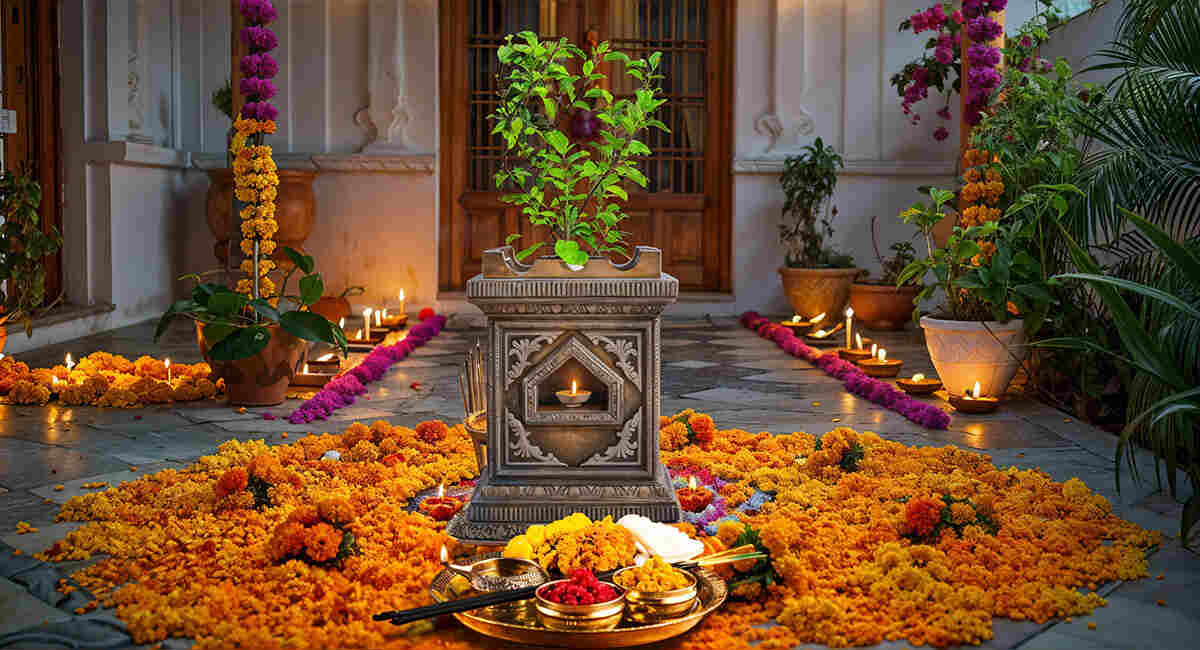Panchuka: The Five Sacred Days of Kartik Month in Odisha
Odisha, a land of vibrant traditions and deep spiritual roots, celebrates numerous religious festivals with great devotion and enthusiasm. Among them, Panchuka stands out as a sacred observance during the last five days of the Kartik month (October–November), which holds a special place in the hearts of devotees across the state. Panchuka, derived from the word “Pancha,” meaning five, refers to the last five days of Kartik Masa in the Hindu lunar calendar. Devotees consider these five days highly auspicious and observe them with fasting, prayers, and various religious rituals.
Let’s examine the significance, customs, and spiritual depth of this beautiful tradition in Odisha.
The Significance of Panchuka
In Hindu belief, Kartik is one of the holiest months of the year. It is said to be dearly beloved by Lord Vishnu and Lord Shiva. Devotees believe that observing fasts and performing spiritual activities during this month, especially during the last five days, brings immense blessings and spiritual merit. Panchuka is supposed to be the final and most sacred phase of Kartik, where devotees intensify their devotion. These days are considered the most rewarding for spiritual growth, penance, and acts of kindness.
According to mythology, even wild animals like fish, deer, and tigers maintain peace during these five days. Stories suggest these animals stop hunting or harming each other in the forests during Panchuka, highlighting its spiritual influence on all life forms.
When is Panchuka Observed?
People observe Panchuka from Ekadashi (11th day) to Purnima (Full Moon) of the Shukla Paksha (waxing moon) of the Kartik month. The final day of Panchuka is known as Kartika Purnima, which is considered the most auspicious.
Rituals and Customs During Panchuka
- Fasting and Food Restrictions
Devotees, especially in Odisha, follow a strict vegetarian diet during Panchuka and often throughout the Kartik month. Some give up onion, garlic, and certain lentils during these five days. Many, especially older women, observe strict fasting. They refrain from eating rice and eat it only once a day. Others choose to consume fruits, milk, and simple sattvic food.
- Temple Visits and Special Puja
People wake up early, bathe before sunrise, and offer prayers to Lord Vishnu, Lord Shiva, and the Tulasi (Holy Basil) plant. Temples across Odisha, especially Jagannath Temple in Puri, witness huge crowds during Panchuka. On Kartika Purnima, devotees also offer Boita Bandana (miniature boats floating in rivers and ponds) to commemorate Odisha’s ancient maritime history.
- Tulasi Puja
Tulasi (holy basil) is worshipped daily during Kartik, especially during Panchuka. Devotees light lamps near the Tulasi plant in the evening, recite prayers, and sing devotional songs. During these days, the Tulasi Vivaha (the symbolic marriage of the Tulasi plant with Lord Vishnu) is celebrated with great joy.
- Lighting of Lamps
A beautiful sight during Panchuka is the rows of oil lamps lit every evening on doorsteps, around Tulasi plants, and inside homes. This tradition, known as Deepa Dana, symbolizes the triumph of light over darkness and attracts divine blessings.
- Reading Holy Scriptures
Devotees engage in reading sacred texts like the Kartika Mahatmya, Bhagavad Gita, and Vishnu Sahasranama during these days. Listening to stories from Lord Jagannath’s leelas is also an everyday spiritual practice.
Panchuka and the Jagannath Temple, Puri
The world-famous Jagannath Temple in Puri becomes the spiritual heart of Panchuka celebrations. Thousands of devotees travel from Alisha and India to the temple to obtain the blessings of Lord Jagannath, a manifestation of Lord Vishnu.
The priests elevate the rituals and offerings at the temple during these five days. On Kartika Purnima, the temple witnesses a grand celebration with special prayers, rituals, and bhogs (offerings) to the Lord.
Kartika Purnima – The Grand Finale
The last day of Panchuka is Kartika Purnima, also known as Tripuri Purnima. Devotees believe that Lord Vishnu took the Matsya (fish) avatar on this day to save the world from a great flood.
In Odisha, people wake up before dawn and go to rivers, ponds, or the sea for a holy dip. They also float paper or banana-leaf boats with lamps, betel leaves, and flowers. This is called Boita Bandana, which pays tribute to Odisha’s ancient Sadhabas (sailors) who once sailed to Southeast Asia for trade.
Cities like Cuttack and Puri celebrate this day with grandeur, fairs, cultural events, and street decorations.
Why Panchuka Matters Today
Panchuka is not just a religious observance. It teaches us valuable life lessons:
- Discipline through fasting and spiritual practices
- Compassion by promoting non-violence towards animals
- Gratitude to nature, rivers, and plants like Tulasi
- Devotion through prayer, bhajans, and scripture reading
- Simplicity and Purity in food and lifestyle
Even in today’s fast-paced world, the observance of Panchuka connects people to nature, culture, and spirituality. It fosters a sense of inner peace and collective harmony.
Final Thoughts
Panchuka is a spiritual journey—a time of reflection, devotion, and renewal. In the heartland of Odisha, it brings families together, strengthens faith, and illuminates lives with the glow of a thousand lamps.
Whether you are deeply religious or just curious about Indian traditions, Panchuka offers a beautiful window into the soulful culture of Odisha. If you ever visit Odisha during this time, don’t miss the vibrant scenes of Tulasi worship, boats floating on rivers, and the peaceful aura of this sacred observance.
Let the five days of Panchuka light your path with devotion, peace, and blessings.


